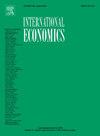Do international capital flows discourage labour productivity in the Caribbean? An empirical investigation of Jamaica
引用次数: 0
Abstract
International capital flows can be harnessed to catalyse economic prosperity in developing nations. Correspondingly, they can have unintended consequences that keep these countries in a low productivity trap. As of 2020, Jamaica’s labour productivity has not eclipsed its historical high in 1976 despite being one of the top remittance-receiving destinations globally and a magnet for FDI inflows for tourism and global services. Leveraging linear and flexible orthodox and machine-learning tools, we empirically explore the dynamic heterogeneous impact of Remittances, FDI and ODA on labour productivity in the Caribbean nation. In the short run, a 10% increase in remittances has a contemporaneous impact of on Jamaica’s labour productivity on average. At higher levels of labour productivity (greater than US $16,594.80), the adverse impact of remittances on labour productivity becomes more detrimental. Over longer horizons, the results reveal that positive (negative) shocks to remittances reduce (increase) Jamaica’s labour productivity. Also, remittances negatively impact Jamaica’s labour productivity at lower remittance inflow levels or higher levels of ODA. FDI and ODA exert adverse effects. Overall, we find that aggregate wage, labour force participation and GDP are plausible channels for the adverse remittance effect on Jamaica’s labour productivity.
国际资本流动是否阻碍了加勒比地区的劳动生产率?对牙买加的实证调查
国际资本流动可以用来促进发展中国家的经济繁荣。相应地,它们可能产生意想不到的后果,使这些国家陷入低生产率陷阱。截至2020年,尽管牙买加是全球最大的汇款接收目的地之一,并吸引了旅游业和全球服务业的外国直接投资流入,但其劳动生产率仍未超过1976年的历史最高水平。利用线性和灵活的正统和机器学习工具,我们实证地探讨了汇款、外国直接投资和官方发展援助对加勒比国家劳动生产率的动态异质影响。从短期来看,汇款每增加10%,对牙买加劳动生产率的同期平均影响为- 0.9%。在较高的劳动生产率水平上(高于16,594.80美元),汇款对劳动生产率的不利影响变得更加有害。从更长远的角度来看,研究结果表明,对汇款的正面(负面)冲击会降低(提高)牙买加的劳动生产率。此外,在汇款流入水平较低或官方发展援助水平较高时,汇款会对牙买加的劳动生产率产生负面影响。外国直接投资和官方发展援助产生不利影响。总体而言,我们发现总工资、劳动力参与率和GDP是汇款对牙买加劳动生产率产生不利影响的合理渠道。
本文章由计算机程序翻译,如有差异,请以英文原文为准。
求助全文
约1分钟内获得全文
求助全文
来源期刊

International Economics
Economics, Econometrics and Finance-Economics, Econometrics and Finance (all)
CiteScore
6.30
自引率
0.00%
发文量
74
审稿时长
71 days
 求助内容:
求助内容: 应助结果提醒方式:
应助结果提醒方式:


